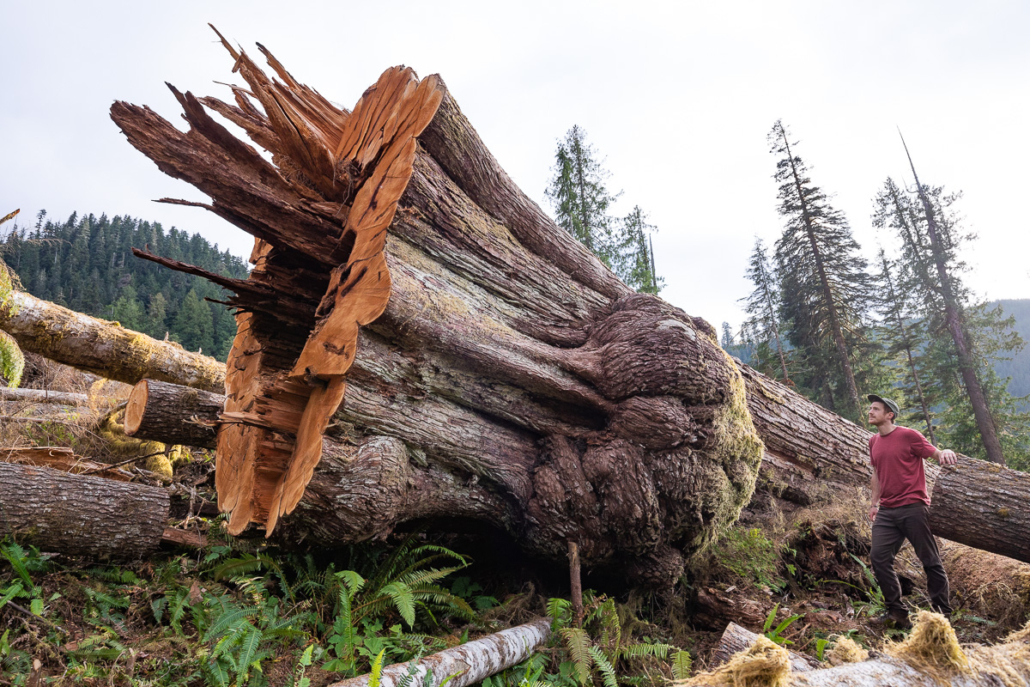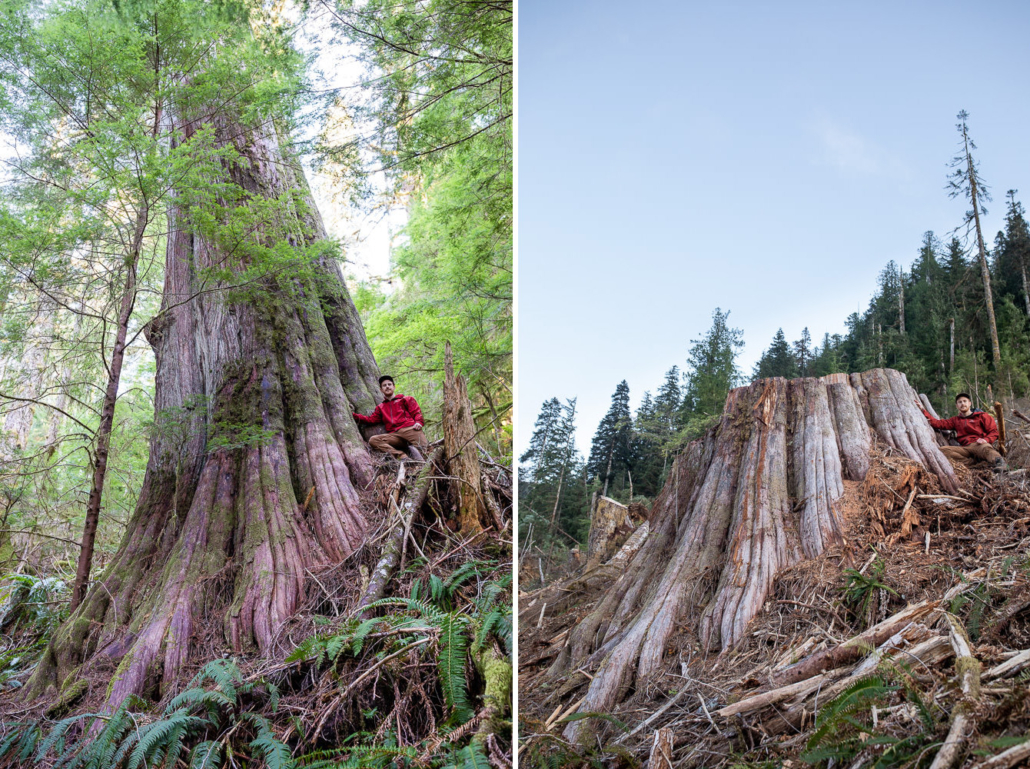 Jun 2 2021
Jun 2 2021BC government’s forestry announcement fails to address old-growth crisis
Victoria, BC – The Ancient Forest Alliance is highly critical of yesterday’s announcement by the BC government of its intentions to modernize BC’s forest policies while at the same time failing to address the ongoing old-growth crisis.
“Today’s announcement on forest sector modernization widely misses the mark in terms of what steps are critically needed to ensure the ecological sustainability and long-term economic viability of BC’s forests,” stated AFA campaigner Andrea Inness. “Truly modernized forest policies would include ending the outdated, unsustainable, and massive industrial logging of the grandest remaining stands of ancient forests.”

Haddon Creek – Vancouver Island. TFL 46 – Teal-Jones
“As protests continue to erupt across southern Vancouver Island and beyond in response to the BC government’s destructive old-growth liquidation policies, Premier Horgan has missed a critical opportunity to build public trust and prove the NDP are serious about the forestry paradigm shift that they promised last fall by halting logging in contentious, at-risk old-growth forests. Instead, they peddled more highly misleading figures on how much old-growth forest is protected and blamed climate change, not logging, for the loss of these forests.”
The new intentions paper outlines a suite of forest policy changes, including tenure re-distribution that will give First Nations greater access to forest resources in their territories, increased emphasis on value over volume in the forest sector, and a “strengthened” annual allowable cut for BC’s controversial logging agency, BC Timber Sales.

Near logging roads constructed by Teal-Jones approach the unprotected headwaters of the Fairy Creek Valley.
“Transferring tenures while failing to fund and support economic alternatives that help leave ancient forests standing will only further entrench the status quo of old-growth logging and leave forestry-dependent communities, including First Nations, with few options to diversify their economies,” stated AFA campaigner TJ Watt. “While we welcome policy that allows for greater decision-making in line with communities’ interests, values, and aspirations, how will communities be able to adequately address those various needs when the only economic option on the table is more old-growth logging?”
“The BC government’s forestry plan must be accompanied by funding to support expanded deferrals in the most at-risk forest ecosystems, Indigenous-led protected areas, and sustainable economic alternatives to old-growth logging, while taking advantage of the $2.3 billion in federal funding that’s recently been committed to expand protected areas across Canada, including for new Indigenous Protected and Conserved Areas.”
“The plan must also be coupled with legislation to protect remaining old-growth forests, the adoption of an ecosystem-based management approach in BC’s forest sector, and lower annual allowable cuts that respect ecological limits.”
“The BC NDP keeps saying they’re committed to implementing the recommendations from their Old Growth Strategic Review Panel,” stated Inness, “but they have failed to make the connection between these proposed policy changes, the declining state of old-growth forests, and the need to transition to a value-added, second-growth forest sector.”

“A vision for BC’s forests that isn’t firmly rooted in ecological health does no favours for communities. This path continues to rob British Columbians of old-growth forests and the critical ecological services they provide while driving communities ever closer to the looming economic cliff ahead of them.”
The intention paper – and Premier Horgan’s speech during yesterday’s announcement – did little to reassure British Columbians that his government is taking the old-growth crisis seriously.
“It’s beyond frustrating to hear Premier Horgan continue to repeat false and misleading claims about the amount of old-growth remaining in BC, how much is protected, and what the steps the province has taken. It seems almost every day he’s doing more to damage public trust and undermine the province’s credibility on the old-growth issue.”
Background info
- Premier Horgan has repeatedly claimed that 200,000 hectares of old-growth forest have been “protected” through the BC government’s September 2020 deferral announcement. However, the vast majority of these forests were either already protected or contain low productivity forests with smaller trees. In reality, only 3,800 hectares of previously unprotected, high productivity old-growth forests – with big trees and which scientists say are critically endangered – were temporarily deferred.
- Premier Horgan also stated during yesterday’s press conference that 1,500 “groves” had been protected through the BC government’s Special Tree Regulation. That regulation is estimated to protect up to 1,500 of BC’s biggest trees with one-hectare buffer zones around them. This does not equate to protecting entire groves of trees except in the rare circumstance that the buffer zones of two or more trees that meet the province’s exceptionally high size thresholds overlap.
- Premier Horgan also made a highly misleading claim on the status of old-growth forests, stating that 10 million hectares of old-growth forests are “protected” in BC. However, this includes vast swathes of low productivity forests that have little to no commercial value, as well as forests outside the Timber Harvesting Land Base, which are frequently logged and much of which could be logged in future as forests within the THLB are depleted.
- According to independent scientists, the government’s own data shows that over 97% of BC’s highest productivity forests with the biggest trees have been logged and most of what remains is slated to be logged in coming years.
-30-





